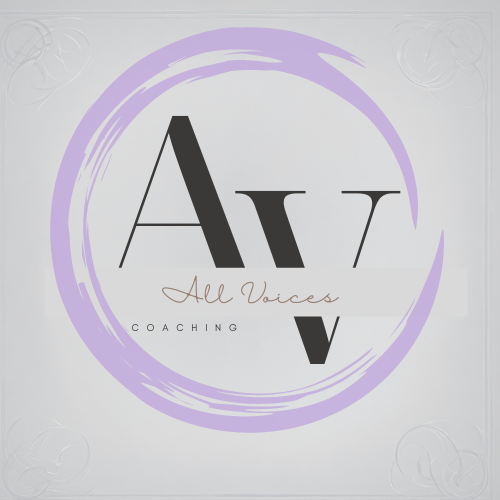(Part Two in the “Funding with Intention” Series)
The most compelling grant proposals aren’t written to impress funders; they’re written to honor communities.
Behind every winning proposal is a story of clarity, alignment, and integrity. When your project plan reflects a genuine understanding of the people you serve, your grant proposal becomes more than a funding request; it becomes an invitation to invest in shared transformation.
This guide will walk you through the core strategies for writing a grant proposal that resonates, rooted in human-centered design and liberation-centered leadership.
Strategy 1: Understand Your Participants’ Real Needs and Priorities
Effective proposals begin where good programs begin, with people.
Before you write a single line, take time to understand the needs, strengths, and aspirations of the community you serve.
Use data from a participant-informed needs assessment, one that intentionally includes the voices and expertise of people with lived experience. If existing assessments don’t reflect that, host a focus group, community conversation, or listening session to ground your understanding in reality rather than assumption.
Then, write a participant profile that describes your community with care and context: demographics, environment, culture, and history. Use strengths-based language, focus on resilience and assets, not deficits.
Finally, craft a problem statement that explains why your organization and project exist. What gap are you filling, and why does it matter? If others serve the same population, clarify what’s distinct about your approach or relationship to the community.
✨ Liberation Lens: Avoid centering scarcity or “saving” language. Instead of proving need, demonstrate partnership and purpose.
Strategy 2: Describe Your Theory of Change
Your theory of change is the story of how your work creates change. It bridges the gap between problem and possibility.
Describe your approach in plain language; what you do, how you do it, and why it works.
Include your service model (for example: home-based case management, center-based programming, or mobile outreach) and the evidence that supports it.
Evidence-based doesn’t mean expensive. You can access free or open-source frameworks through directories like the California Evidence-Based Clearinghouse for Child Welfare. Search for “evidence-based programs for [your cause]” to identify approaches that align with your mission and capacity.
Explain how you’ll adapt that evidence for your community, because liberation-centered programming honors both rigor and relevance.
Strategy 3: Use Local Data Thoughtfully
Local data makes your proposal relatable and real. It helps reviewers see the story unfolding in their own backyard.
Draw from community-level statistics, local reports, or qualitative data (focus groups, interviews, testimonials).
If your program is the first of its kind, use data that illustrates why your approach fills an existing gap.
Then, translate that data into clear, accessible language, no jargon, no acronyms.
🪶 Remember: Your reader might be a volunteer or generalist. Clarity is a form of respect.
Strategy 4: Provide a Clear and Values-Aligned Budget
Budgets tell stories, too. They reveal what we value.
Start with a master budget that includes staffing, operations, and resources. Make sure it reflects your values (fair wages, accessibility, participant wellbeing) as much as your logistics.
From there, create funder-specific versions by adapting the master budget to meet each funder’s priorities and restrictions.
Show how funds will be used to achieve outcomes, not just cover expenses.
💡 Tip: Think of your budget as an equity tool. It’s an opportunity to model transparency and care in how you resource people and projects.
Strategy 5: Create a Logic Model That Actually Makes Sense
Logic models often intimidate new nonprofit leaders, but they don’t have to. Think of them as a snapshot of transformation: how people move from where they are to where they want to be through your program.
Here’s what to include:
- Goals: The broad vision your project supports (rooted in your community’s self-identified needs).
- Objectives: Specific, measurable steps toward those goals.
- Activities: What you’ll actually do — workshops, outreach, services, etc.
- Inputs/Resources: The people, tools, and funding that make it possible.
- Outputs: The tangible results (sessions held, people served, materials produced).
- Outcomes: The meaningful change you aim for (skills gained, systems shifted, lives improved).
- Indicators: How you’ll know it’s working (data points, feedback, or milestones).
🧩 Liberation Lens: A good logic model doesn’t just measure what you do, it measures what matters to the people you serve.
Strategy 6: Build a Master Program Guide
Your Master Program Guide is a living document that ties it all together. It serves as a roadmap for your team, aligning your program’s purpose, process, and funding opportunities.
This guide should:
- Outline how your program connects to your organization’s mission and vision
- Identify overlaps with funder priorities
- Include standardized sections you can easily adapt for each grant application
The result? A resource that saves time, ensures consistency, and strengthens your team’s shared understanding of the work.
Grant Writing Best Practices
To summarize:
1. Plan Ahead:
Give yourself time to think, not just write. Reflection strengthens proposals.
2. Use Data and Evidence Responsibly:
Center stories and statistics equally — both matter in demonstrating impact.
3. Tailor Without Compromising:
Align with funders’ priorities only when they align with your mission. Avoid mission drift disguised as opportunity.
4. Build a Repeatable System:
Create a consistent application checklist and internal review process. This builds confidence, not chaos.
In Closing
The grant proposal is a mirror of your organization’s values, readiness, and relationships.
When you write from a place of clarity and connection, funders see not just a project, but a partnership.
Your next step? Build the internal systems that make your process sustainable. We’ll explore that in Part Three of the series.

